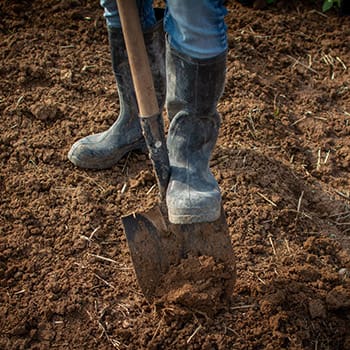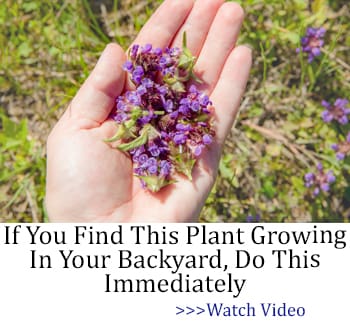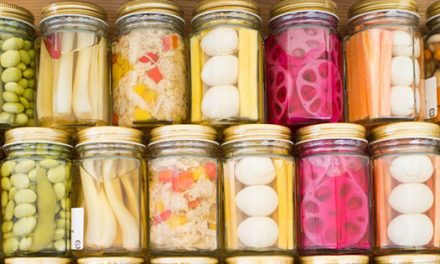Homesteaders and regenerative gardens connect closely through their shared focus on self-sufficiency, sustainability, and resilience. To start a regenerative garden, use sustainable farming practices. These methods help replenish the soil and boost biodiversity. They also create a stronger food source for your homestead.
As a homesteader, you want to live a self-reliant life. You grow your own food and make your own energy. This helps you depend less on outside systems.
Regenerative gardening fits these goals by providing methods and ideas that help with sustainable land use and food production.
What is a Regenerative Garden?
Many factors are harming nature, but the good news is we can help improve the environment. We can do this through regenerative gardening. Regenerative gardening works with nature to revitalize and restore the plants, soil, and ecosystem.
It focuses on creating a healthy garden by starting from scratch. You can compare it to a holistic approach where all your positive actions contribute to a healthy garden.
You are basically letting nature know that you are willing to work with it to make things better.
How to Start a Regenerative Garden
When you think about the serious damage done to the planet, it’s easy to feel hopeless. You might think there is nothing you can do to make a difference. But the reality is that even the smallest contribution is helpful.
Also, knowing where to begin can feel overwhelming. But don’t worry! I have some helpful tips you can use today.
Build Healthy Soil for Your Regenetarive Garden
Healthy soil equals healthy plants. If you want to start a regenerative garden, focus on building healthy soil. Healthy soil is the foundation for a thriving garden.
First, avoid using liquid fertilizers. Even organic ones can make plants depend on artificial nutrients. This prevents the plants from getting the nutrients they need from the soil.
Next, avoid digging. Digging too much harms the soil structure and exposes it to too much air. To solve this, use the no-dig method.
This method doesn’t disturb the soil. Instead of digging, you layer the soil with organic matter. You can then plant your seeds directly into it.
Finally, use organic matter. Organic matter is free from chemicals. You can find it in your kitchen, garden, or locally. It includes food scraps, weeds without seeds, pruned branches, manure, and even coffee grounds from your local coffee shop.
Stop Using Chemicals
Persistent weed and pest problems will tempt you to use chemicals to get rid of them. However, while they may remove pests in your garden, they harm the environment and damage natural life.
In fact, the evidence suggests that pesticides encourage weed growth, making it very difficult to eliminate them. If you want to start a regenerative garden, avoid chemicals. Instead, use natural methods to keep pests away.
One of the best ways to control pests is by attracting natural predators to your garden. For instance, hedgehogs love to eat caterpillars and beetles. You can encourage them to visit by providing food, shelter, and pathways.
Ladybirds are great aphid predators, and you can attract them by planting nettles. Frogs also eat aphids, so consider adding a small pond to your garden to welcome them in.
Related: Why You Should Use Hot Pepper On Your Plants And Vegetables
Companion planting is another great method for reducing the need for chemicals. Certain plants can either repel pests or attract helpful insects.
Garlic, onions, and chives are known to keep various insects away. Plants like catnip, mint, marigold, and tansy have strong scents that repel pests. Additionally, planting lettuce around your vegetable garden can help keep slugs away.
Physical barriers also play a role in protecting your plants. You can use mesh or horticultural fleece to stop birds and insects from harming your plants. To protect young seedlings, try using a cloche made from a plastic bottle.
It’s stronger than regular barriers and provides extra protection. Some gardeners use coffee grounds or crushed eggshells around plants to deter slugs, especially when it’s dry. Copper also works to repel slugs, and you can use copper tape, electrical wire, or coins to create a barrier.
Encourage Biodiversity
A biodiverse garden is full of life. It has many different types of plants. This variety brings natural benefits. It also attracts wildlife that helps your garden stay healthy.
To start a regenerative garden, one of the first steps is to focus on increasing its biodiversity. A diverse garden attracts many types of wildlife, insects, and helpful organisms. This creates a healthier and stronger environment.
Begin by planting a variety of species in your garden. The greater the diversity of plants, the more wildlife and beneficial insects you’ll attract. Pick plants that flower and produce fruit all year. Include a mix of sizes, colors, and scents to attract various pollinators and animals.
Related: 7 Herbs To Plant In Your Survival Garden
Fragrant flowers are especially important in drawing pollinators like bees, butterflies, and moths. These creatures rely on scent to find their food, and by adding fragrant blooms, you can help them thrive in your garden. Pollinators are essential for the production of fruits and seeds, making them a key part of your regenerative garden.
Creating a habitat for wildlife is another way to boost your garden’s biodiversity. A pile of rotting wood in a shady spot offers shelter for fungi and insects. It also serves as a home for animals like snakes, lizards, and toads. Piles of grass clippings and compost heaps can also attract slow worms, which are great for the ecosystem.
Recycle
Waste infiltrates the natural habitats of wildlife causing damage and death. Therefore, recycling plays an important role in biodiversity. Recycling helps manage waste. It reduces the trash that ends up in rivers, oceans, forests, and other natural places where animals live.
To start a regenerative garden, homesteaders can take several steps to increase their recycling efforts and reduce waste. Reusing water is a great place to begin.
Collecting rainwater for irrigation helps conserve resources and ensures your garden stays healthy. You can reuse water from laundry or dishwashing. Treat it first, then use it for watering plants or cleaning tasks, like washing the car.
Composting is another powerful method to enrich your garden while recycling. You can turn yard waste, kitchen scraps, and manure into compost. This compost gives your garden nutrient-rich material. It helps nourish the soil. This process not only reduces waste but also supports the health of your plants.
Related: How To Grow An Emergency Garden
Energy recycling is also key for homesteaders looking to live sustainably. Consider using renewable energy options like wind turbines, micro-hydro systems, or solar panels to power your homestead.
Also, using energy-efficient practices can help. This includes maximizing passive heating, using energy-saving appliances, and insulating your home. These steps will reduce waste and lower your carbon footprint.
These actions will help you start a regenerative garden. This will create a cleaner and more sustainable environment for your garden and home.
What to Plant When You Start a Regenerative Garden

When planning a regenerative garden on your homestead, consider a diverse mix of plants to promote soil health, biodiversity, and resilience. Start with a selection of vegetables suited to your climate and soil conditions, such as tomatoes, peppers, cucumbers, and beans. These staples provide nutritious harvests and contribute to a balanced diet.
Additionally, herbs like basil, parsley, and rosemary not only enhance your culinary creations but also attract beneficial insects to the garden, supporting overall ecosystem health.
Incorporating fruit-bearing plants like apples, berries, and stone fruits adds variety and sweetness to your harvest. Choose varieties well-suited to your region and space constraints, considering dwarf or espaliered forms for smaller gardens.
Perennials such as asparagus and rhubarb offer long-term yields with minimal maintenance, while cover crops like clover and rye protect and enrich the soil during periods of rest.
Related: Gardening Myths That Are Actually True
Native plants play a crucial role in supporting local pollinators and wildlife while enhancing the garden’s resilience to pests and diseases. Integrate wildflowers, grasses, and shrubs native to your area to create a habitat that thrives alongside your food crops. Employ companion planting techniques with plants like marigolds and garlic to naturally deter pests and boost plant health.
A well-kept regenerative garden grows lots of fresh food consistently. It doesn’t rely on faraway places for supplies, making it less affected by crises.
These gardens have many different plants and don’t need lots of extra stuff like chemicals. They’re good at dealing with tough situations, like bad weather or shortages. By rotating crops, making soil healthy, and saving seeds, regenerative gardens give people a way to grow their own food, even when things get hard.
How To Grow An Emergency Garden
If You See This Plant in Your Backyard, Burn It Immediately! (Video)
13 Plants That Thrive In Shade
DIY Solar Water Heaters To Cut Down On Energy Bills
Vegetable Independence – 100% Self-Reliant Vegetable Production















